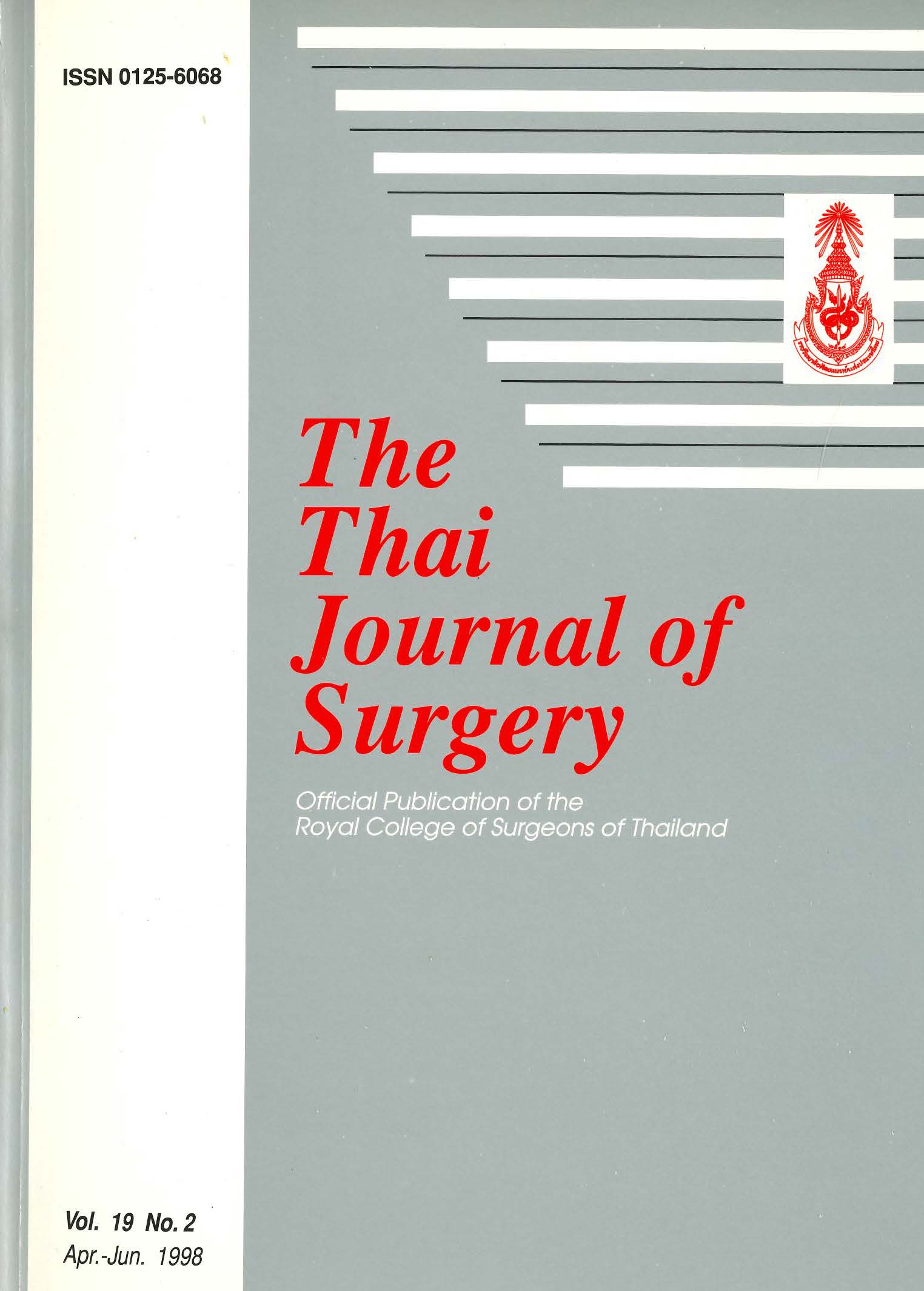Diagnostic Problems in Infantile Cholestatic Jaundice
Abstract
A diagnostic laparotomy was retrospectively assessed for reliability in 173 infants, between 1-4 months of age, who were treated at the Children's Hospital during 1990-1995. Cases of cholestatic jaundice associated with sepsis or concomitant administration of parenteral nutrition were not included in the study. Data from this study supported the reliability of the criteria. If these criteria were strictly followed, none of the inf ants with biliary atresia (BA) in this study would be missed. However, about 25 per cent of infants with neonatal hepatitis (NH) would have to be subject to a diagnostic laparotomy.
It is concluded that any infant with cholestatic jaundice and acholic stool should undergo a diagnostic laparotomy at the age of 2 months if total serum bilirubin is 6-25 mg/dl, unless there is a steady decrease of serum bilirubin and the cause of jaundice is documented by other laboratory investigations and clinical evidences. Those who have a positive serology test for syphilis should be treated accordingly and closely ed. If the infants' jaundice and stool colour are not improved in an expected timing and should also undergo a diagnostic laparotomy. Radionuclide hepatobiliary scan needs further assessment for its sensitivity. If this test can be proved to have a 100 per cent sensitivity, it could be included in the screening criteria. UItrasonographic study should be done in every case in order to detect choledochal cyst, but not to differentiate NH from BA.
References
2. Ferry GD, Selby ML, Udall J, et al. Guide to early diagnosis of biliary obstruction in infancy. Clin Pediatr 1985; 24: 305-11.
3. Shah HA, Spivak W, Neonatal cholestasis. New approaches to diagnostic evaluation and therapy. Pediatr Clin North Am 1994: 41:943-66.
4. Abramson SJ, Treves S, Teele RL. The infants with possible biliary atresia : evaluation by ultrasound and nuclear medicine. Pediatr Radiol 1982: 12: 1-5.
5. Manolaki AG, Larcher VF, Mowat AP, et al. The prelaparotomy diagnosis of extrahepatic biliary atresia. Arch Dis Child 1983; 58: 591-4.
6. Vajaradul C, Pongpipat D. Neonatal hepatitis and biliary atresia. Siriraj Hos Gaz 1980; 32: 497-500 (in Thai).
7. Altman RP, Stolar CJH. Pediatric hepatobiliary disease, Surg Clin North Am 1985; 65:1245-67.
8. Ratanamart V, Thaitrong P, Nanakorn C, et al. Differential diagnosis between neonatal hepatitis and biliary atresia using 99mTc DISIDA scintigraphy. Siriraj Hos Gaz 1988: 40:831-6 (in Thai).
9. Watanatittan S, Niramis R, Rattanasuwan T, Cholestatic jaundice in infancy : diagnostic experience. Bull Depart Med Serv 1994; 19: 77-86 (in Thai).
10. Williamson SL, Seibert JJ, Butler HL, et al. Apparent gut excretion of Tc-99m- DISIDA in a case of extrahepatic biliary atresia. Pediatr Radiol 1986; 16: 245-7.
11. Hays DM, Woolley MM, Snyder WH Jr, et al. Diagnosis of biliary atresia : relative accuracy of percutaneous liver biopsy, open liver biopsy and operative cholangiography. J Pediatr Surg 1967; 71: 598-607.
12. Mowat AP, Psacharopoulos HT, Williams R. Extrahepatic biliary atresia versus neonatal hepatitis. Review of 137 preoperatively investigated infants. Arch Dis Child 1976; 51:763-70.
13. Majd M, Reba RC, Altman RP. Hepatobiliary scintigraph with 99mTc PIPIDA in the evaluation of neonatal jaundice. Pediatrics. 1981; 67: 140-5.
14. Dick MC, Mowat AP. Biliary scintigraphy with DISIDA. A simpler way of showing bile duct patency in suspected biliary atresia. Arch Dis Child 1986; 61: 191-2.
15. Park WH, Choi SO, Lee HJ, et al. Anew diagnostic app to biliary atresia with emphasis on the ultrasonographic triangular cord sign : comparison of ultrasonography, hepatobiliary scintigraphy, and liver needle biopsy in the evaluation of infantile cholestasis. J Pediatr Surg 1997; 32:1555-9.
16. Sty JR, Glicklich M, Babbitt DP, et al. Technetium 99m biliary imaging in pediatric surgical problems. J Pediatr Surg 1981:16:686-90.
17. Landing BH. Consideration of the pathogenesis of neonatal hepatitis, biliary atresia and choledochal cyst : the concept of infantile obstructive cholangiopathy, Prog Pediatr Surg 1974; 6: 113-36.
18. Srinivasan G, Ramamurthy RS, Bharathi A, et al. Congenital syphilis; a diagnostic and therapeutic dilemma. Pediatr Infect Dis 1983; 2:436-41.
19. Watanatittan S, Niramis R. Choledochal cyst : review of 74 pediatric cases. J Med Assoc Thai (in press).
20. Choi SO, Park WH, Lee HJ, et al. "Triangular cord": a sonographic finding applicable in the diagnosis of biliary atresia. J Pediatr Surg 1996; 31:363-6,
21. Klingensmith WC, Fritzberg AR, Spitzer VM, et al. Clinical evaluation of Tc-99m- trimethyl bromo-IDA and Tc-99m- diisopropyl-IDA for hepatobiliary imaging. Radiology 1983; 146: 181-4.
22. Krishnamurthy s, Krishnamurthy GT, Nuclear hepatology : where is it heading now? J Nucl Med 1988; 29: 1144-8.
23. Watanatittan S. Reconstructive surgery for biliary atresia : a personal experience. Bull Depart Med Serv 1984; 9: 131-42. (in Thai)
Downloads
Published
How to Cite
Issue
Section
License
Articles must be contributed solely to The Thai Journal of Surgery and when published become the property of the Royal College of Surgeons of Thailand. The Royal College of Surgeons of Thailand reserves copyright on all published materials and such materials may not be reproduced in any form without the written permission.



